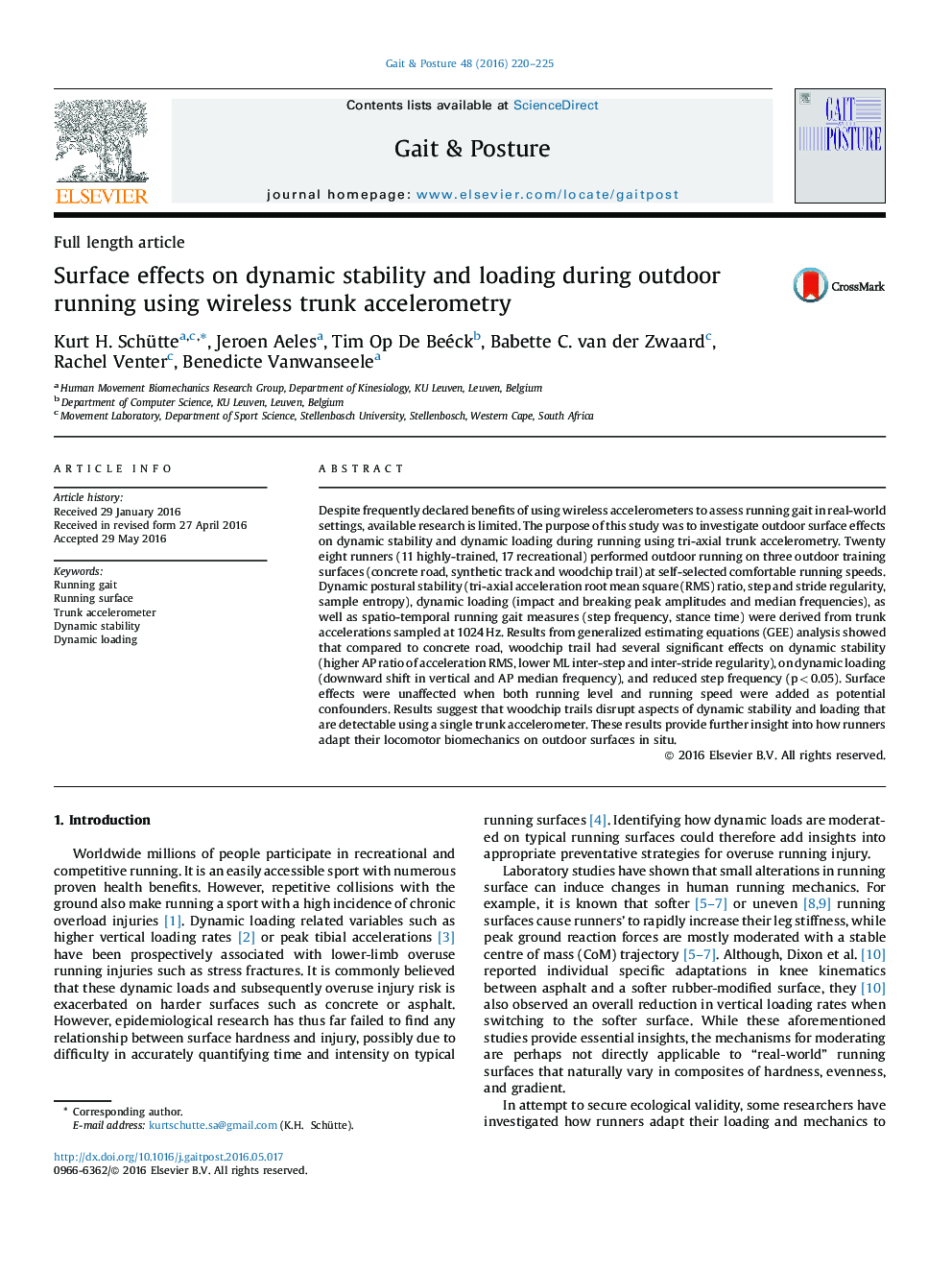| Article ID | Journal | Published Year | Pages | File Type |
|---|---|---|---|---|
| 4055802 | Gait & Posture | 2016 | 6 Pages |
•Wireless trunk-accelerometry assessed running mechanics on three outdoor surfaces.•Dynamic stability was unaltered between concrete and synthetic running surface.•ML inter-step and inter-stride regularity decreased on woodchips versus concrete.•VT impact and AP breaking trunk accelerations were unaffected by any surface.•Training status and running speed did not confound running surface effects.
Despite frequently declared benefits of using wireless accelerometers to assess running gait in real-world settings, available research is limited. The purpose of this study was to investigate outdoor surface effects on dynamic stability and dynamic loading during running using tri-axial trunk accelerometry. Twenty eight runners (11 highly-trained, 17 recreational) performed outdoor running on three outdoor training surfaces (concrete road, synthetic track and woodchip trail) at self-selected comfortable running speeds. Dynamic postural stability (tri-axial acceleration root mean square (RMS) ratio, step and stride regularity, sample entropy), dynamic loading (impact and breaking peak amplitudes and median frequencies), as well as spatio-temporal running gait measures (step frequency, stance time) were derived from trunk accelerations sampled at 1024 Hz. Results from generalized estimating equations (GEE) analysis showed that compared to concrete road, woodchip trail had several significant effects on dynamic stability (higher AP ratio of acceleration RMS, lower ML inter-step and inter-stride regularity), on dynamic loading (downward shift in vertical and AP median frequency), and reduced step frequency (p < 0.05). Surface effects were unaffected when both running level and running speed were added as potential confounders. Results suggest that woodchip trails disrupt aspects of dynamic stability and loading that are detectable using a single trunk accelerometer. These results provide further insight into how runners adapt their locomotor biomechanics on outdoor surfaces in situ.
Graphical abstractFigure optionsDownload full-size imageDownload high-quality image (199 K)Download as PowerPoint slide
